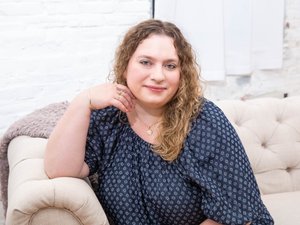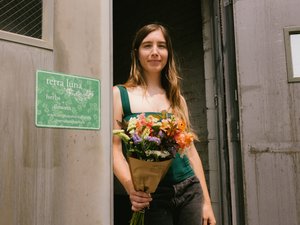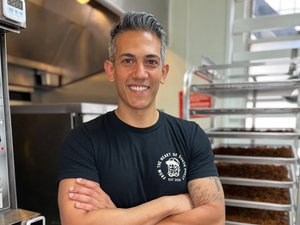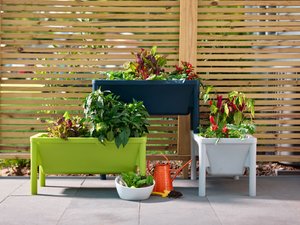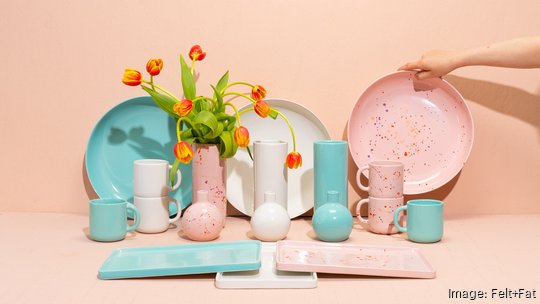
A Philadelphia ceramic design studio specializing in chef-inspired tableware is expanding its production facility by nearly triple, a move that over the next few years will allow the company to grow output upwards of 400% and potentially increase revenue to $10 million by 2025.
Started in 2013, Felt+Fat has grown dramatically in the past decade and will continue its expansion in the coming years by relocating its production facility to a larger space and upping its contract manufacturing operation later this summer. The company currently operates out of roughly 7,000 square feet at MaKen Studios South at 3401 I St. in the Kensington neighborhood of Philadelphia. After working for several years in a small, 300-square-foot studio, the company moved there in 2016, initially taking up about 5,500 square feet. It added another 1,500 square feet last year and is readying to make an even larger leap.
Felt+Fat is known for its hand-crafted ceramic plates, bowls and mugs. The brand has garnered the attention of some of the region’s top chefs and has made custom pieces for James Beard Award-winning chefs Eli Kulp and Ellen Yin. It also sells home goods like vases, planters, and pet bowls. The pieces are made from ceramic and feature an array of patterns and finishes such as solid colors the best-selling confetti. Prices range from $23 for an espresso cup to $60 for a dinner plate, while a seven-piece set costs upwards of $340.
The company, which got its start in part thanks to Yin’s High Street Hospitality Group, is looking at a major expansion. It signed a 10-year lease at 3750 M St., a building that spans about 26,000 square feet, where it plans to move this August or September. Felt+Fat expects to occupy about 20,000 square feet to start, with the other 6,000 being subleased.
The much larger space will allow the company ample runway to grow its output. In 2022, Felt+Fat produced about 60,000 pieces and is expecting to hit about 100,000 this year. Once the new space is online, owner Nate Mell anticipates they could “fairly easily double [output] next year” as demand requires.
Upping production will also allow the company to grow its revenue dramatically. In 2020, Felt+Fat did about $400,000 in revenue and projects it will hit over $2 million this year. Mell expects revenue could grow to $10 million by 2025.
The idea for Felt+Fat began in 2013. Long inspired by street art, Mell enrolled in Temple University’s Tyler School of Art and Architecture where he studied glass. During his studies and after graduating, Mell worked in restaurants, primarily fine dining. One of those restaurants was High Street Hospitality’s Fork.
During that time, Mell began dabbling in metal fabrication and casting and soon took up ceramic work at the Clay Studio in Philadelphia.
Kulp, today the culinary director for High Street Hospitality, knew about Mell’s foray into ceramics. When he was looking for custom plates for a new restaurant concept that would become High Street on Market – the concept shuttered during the pandemic and later relocated and opened as High Street Philly – he asked if Mell would make something.
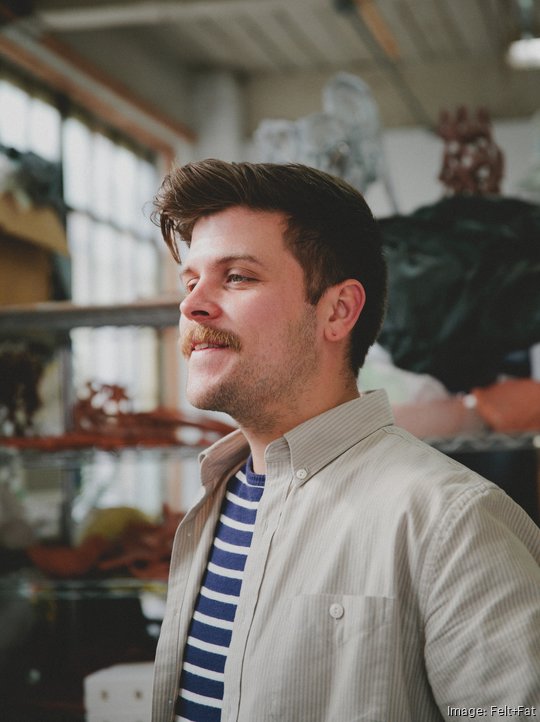
“I’d never made a plate before but I was like yes, of course I can make a plate,” Mell recalled.
When he was trying to determine what that might look like, Kulp encouraged him to look at what some of the best restaurants in the world were doing. At the time, that was Noma in Copenhagen. More than inventive cuisine, the Danish restaurant was using handmade plates from a Swedish ceramicist.
“I thought to myself, 'Well, if Noma is using handmade plates every kind of cool up and coming chef is probably going to start thinking about doing something like this. Maybe there's a business around just making custom plates for chefs,'” Mell recalled. “And so that's the impetus for the business.”
Mell partnered with Wynn Bauer – who is no longer with the company – and Felt+Fat was formalized in 2014 and has since gone on to work with not only High Street Hospitality Group but concepts like Laurel, Jezabel’s, River Twice and Two Robbers, as well as Schulson Collective restaurants and 2023 James Beard Award Outstanding Restaurant winner Friday Saturday Sunday. Its custom creations can also be found in restaurants across the globe.
The brand began with a focus on the hospitality industry but in recent years has honed in on direct-to-consumer sales, which today account for about 60% of business. In addition, the company has branched into contract manufacturing, something Mell expects will grow once the new facility is online. One such partnership has been with Houseplant, the home goods brand started by actor Seth Rogen and filmmaker Evan Goldberg.
“I can see a lot of opportunity with us finding partners, designing product together and them selling it and us selling it,” Mell said.
The shift to direct-to-consumer sales began around 2019. The timing was fortuitous with the hospitality industry all but shutting down the following year when Covid-19 swept the nation, forcing lockdowns.
When the pandemic struck, Mell was able to secure loans from his bank and Paycheck Protection Program funds, plus an Economic Injury Disaster Loan from the U.S. Small Business Administration, on top of some grants.
“We came back to work with more money in the bank than we've ever had before,” Mell said.
He used that money to ramp up production. Consumers were buying home goods at an increased rate during that time and Felt+Fat grew revenue from $400,000 in 2020 to over $1 million in 2021.
Momentum continues to build and Mell projects Felt+Fat, which is made to order, will do a little over $2 million in revenue this year.
To keep up with and fund growth, Felt+Fat last year secured a New Market Tax Credit loan of about $1.2 million from the Philadelphia Industrial Development Corp. The company also raised about $500,000 from a small pool of investors, Mell said. Together, the funds helped them secure the new lease as well as equipment to outfit it.
The new space and equipment would max out annual production at between 400,000 and 500,000 pieces while its kiln capacity is between 300,000 and 400,000 units. There’s room for an additional kiln should they need. At capacity – something Mell said could happen in the next three to fours years – output could reach five times more than what the company is projecting for 2023.
With that growth, Mell expects to grow headcount from the current 21 employees by 10 to 15 over the next two years.
As the brand grows, Mell is considering retail experiences, whether through collaboration or a dedicated space. He has drawn some inspiration from Heath Ceramics in California, which has a restaurant connected to its factory and showroom, in addition to development studios and galleries.
“I see there being a lot of potential for having an R&D studio and/or a space for collaborations or more of a small residency program where we're doing development work in an open sort of studio that's connected to a showroom,” he said, noting any such concept is still at least a year off.
